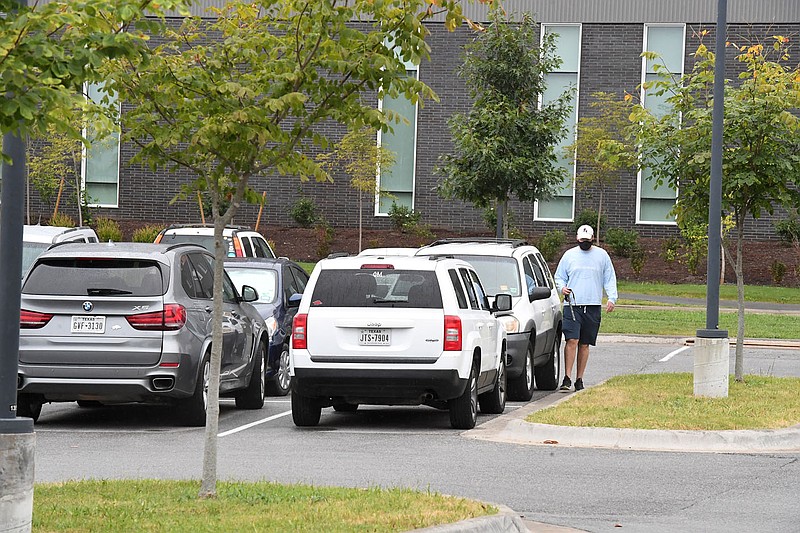Look around Fayetteville lately, and it's easy to tell the college students are back. You might not see the students themselves, but you can see their cars and especially their pickups on every street and parking lot. These hulking pickups, many with Texas license plates and Greek fraternity stickers, dwarf the native Subarus of Fayetteville.
The University of Arkansas campus will welcome almost 28,000 students and another 4,500 faculty and staff even in this most unusual year. Our regional economy depends on these students coming to town every year to rent apartments, eat at restaurants and shop.
But the added traffic is a real drag.
Imagine, for just a moment, an alternative: a campus where students aren't zooming around in 5,000-pound pickups, where we don't pave acre upon acre of prime real estate just to paint white rectangles and where we're happier for moving beyond a dependence on cars. Maybe it's closer to reality than we believe.
Many American universities bar freshmen from bringing cars to campus. Some, such as the University of Wisconsin, have banned students from driving to campus altogether.
Going car-light makes sense for campuses. It's astounding how much of Fayetteville is devoted to parking students' vehicles. The University of Arkansas campus has more than 14,000 parking spots that cover millions of square feet, which have to be maintained and monitored. Despite selling parking permits for hundreds of dollars per semester, parking remains a money sink for the university.
Thousands of cars set among tens of thousands of students walking between classes also brings major safety drawbacks. College students are more likely to be hurt or killed by automobiles than by anything else they might bring to campus.
Particularly dangerous for pedestrians are ever-larger pickups and SUVs. Research from the National Highway Safety Traffic Institute found a pedestrian is 3.4 times as likely to be killed when hit by a larger vehicle. Modern pickups and SUVs are designed with large, imposing hoods that create huge blind spots and high front bumpers. A sedan that strikes a person hits their legs, rolling them onto the hood. These big pickups by contrast strike at a person's torso and roll over the person's body.
Traffic or no, the University of Arkansas remains one of the most walkable places in the state. The main campus has pretty much everything a student needs: umpteen restaurants, a dentist's office and even a miniature Walmart store affectionately known as "small mart." The eminently walkable Dickson Street leads from campus to bars, restaurants, shops, concerts and a fleet of food trucks. A new fleet of e-scooters makes those off-campus trips even easier.
Not surprisingly, students are shifting from driving as their preferred transportation. The more walkable off-campus housing commands the highest rent. And now 65% of students surveyed say they don't primarily drive to class; they use alternative transportation such as bikes, buses or their own two feet.
Knowing drivers are the minority among students certainly makes it a lot easier to welcome the students back to town -- even if we don't welcome the traffic.
Dane Eifling is the city of Fayetteville’s mobility coordinator.
